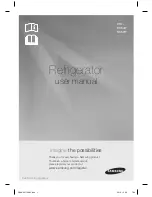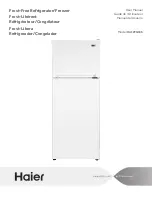
Electrical Maintenance
56
NOTE: All voltage readings should be taken
between the negative battery terminal, or a good
chassis ground, and the terminals indicated,
unless stated otherwise.
1. Remove the CYCLE-SENTRY module from
the option board to prevent the Auto Start
system from preheating and cranking the
engine.
2. Disconnect the 20 wire from the engine reset
switch to prevent the engine reset switch from
tripping.
3. Set the unit for continuous run operation and
place the On/Off switches in the Off position.
4. Check the battery voltage. If the battery
voltage is less than 12 volts, the battery must
be charged or tested to determine if it should
be replaced.
5. Check the voltage at the B+ terminal on the
alternator. Battery voltage must be present. If
not, check the 2A circuit.
6. Check the voltage at the VOLT SENSE
terminal on the alternator. Battery voltage
must be present. If not, check the 2 circuit.
7. Place the On/Off switches in the On position
and press the
O
N
key.
8. Wait 20 seconds for the unloading timer to
de-energize the unloading relay and check the
voltage at the EXC terminal on the alternator.
Battery voltage must be present. If not, check
the EXC circuit.
9. Press the
O
FF
key.
10. Attach a clamp-on ammeter to the 2A wire
connected to the B+ terminal on the alternator.
11. Connect a voltmeter between the B+ terminal
and a chassis ground.
12. Replace the CYCLE-SENTRY module, and
connect the 20 wire to the engine reset switch.
13. Start the unit and run it in high speed.
14. Connect a jumper wire between the F2
terminal and a chassis ground. This will full
field the alternator.
a. Full alternator output (the alternators rated
output) indicates the alternator is good but
the voltage regulator needs replacement.
b. If there is low or no output, the alternator
is probably faulty. However, the following
items are potential causes for not charging:
•
Check the alternator brushes.
•
Check the 2A circuit from the
alternator to the battery.
•
Properly tension the alternator belt.
•
Check battery cable connections and
the alternator ground. They must be
clean and tight.
•
The battery must be in good condition
and must accept a charge.
•
Check for excessive or unusual
amperage draw by the unit control
circuits.
Battery
Inspect/clean the battery terminals and check the
electrolyte level during scheduled maintenance
inspections. The minimum specific gravity should
be 1.235. Add distilled water as necessary to
maintain the proper water level.
Charging System
Immediately after start-up, the alternator may not
charge. This is due to light film build-up on the
alternator slip rings. The film build-up occurs
primarily on units that have been sitting unused
for long periods of time. The film should
disappear after a minute or two, and the alternator
should start to charge.
CAUTION: Never apply battery voltage to
terminal F2 or voltage regulator failure
will occur.
Summary of Contents for 920000
Page 4: ......
Page 10: ...Table of Contents 10...
Page 22: ...Specifications 22...
Page 41: ...Unit Description 41 Unit Photographs Figure 12 Front View Figure 13 Top View ARD026 AGA267...
Page 42: ...Unit Description 42 Figure 14 Engine Side Door Open ARD041...
Page 76: ...Electrical Maintenance 76...
Page 132: ...Hilliard Clutch Maintenance 132...
Page 134: ...Structural Maintenance 134...
Page 146: ...Refrigeration Diagnosis 146...
Page 148: ...Remote Evaporator Specifications 148...
Page 150: ...Remote Evaporator Maintenance Inspection Schedule 150...
Page 154: ...Remote Evaporator Unit Description 154...
Page 158: ...Remote Evaporator Structural Maintenance 158...
Page 160: ...Remote Evaporator System Diagnosis 160...
Page 164: ...Wiring and Schematic Diagrams Index 164...
Page 165: ...165 MD RD MT Model 30 w In Cab Schematic Diagram Page 1 of 2...
Page 166: ...166 MD RD MT Model 30 w In Cab Schematic Diagram Page 2 of 2...
Page 167: ...167 MD RD MT Model 30 w In Cab Wiring Diagram Page 1 of 3...
Page 168: ...168 MD RD MT Model 30 w In Cab Wiring Diagram Page 2 of 3...
Page 169: ...169 MD RD MT Model 30 w In Cab Wiring Diagram Page 3 of 3...
Page 170: ...170 MD RD MT Model 30 w In Cab CYCLE SENTRY Schematic Diagram Page 1 of 2...
Page 171: ...171 MD RD MT Model 30 w In Cab CYCLE SENTRY Schematic Diagram Page 2 of 2...
Page 172: ...172 MD RD MT Model 30 w In Cab CYCLE SENTRY Wiring Diagram Page 1 of 3...
Page 173: ...173 MD RD MT Model 30 w In Cab CYCLE SENTRY Wiring Diagram Page 2 of 3...
Page 174: ...174 MD RD MT Model 30 w In Cab CYCLE SENTRY Wiring Diagram Page 3 of 3...
Page 175: ...175 MD RD MT Model 30 CYCLE SENTRY Wiring Diagram Page 1 of 3...
Page 176: ...176 MD RD MT Model 30 CYCLE SENTRY Wiring Diagram Page 2 of 3...
Page 177: ...177 MD RD MT Model 30 CYCLE SENTRY Wiring Diagram Page 3 of 3...
Page 178: ...178 MD RD MT Model 50 w In Cab Schematic Diagram Page 1 of 2...
Page 179: ...179 MD RD MT Model 50 w In Cab Schematic Diagram Page 2 of 2...
Page 180: ...180 MD RD MT Model 50 w In Cab Wiring Diagram Page 1 of 3...
Page 181: ...181 MD RD MT Model 50 w In Cab Wiring Diagram Page 2 of 3...
Page 182: ...182 MD RD MT Model 50 w In Cab Wiring Diagram Page 3 of 3...
Page 183: ...183 MD RD MT Model 50 w In Cab CYCLE SENTRY Schematic Diagram Page 1 of 2...
Page 184: ...184 MD RD MT Model 50 w In Cab CYCLE SENTRY Schematic Diagram Page 2 of 2...
Page 185: ...185 MD RD MT Model 50 w In Cab CYCLE SENTRY Wiring Diagram Page 1 of 3...
Page 186: ...186 MD RD MT Model 50 w In Cab CYCLE SENTRY Wiring Diagram Page 2 of 3...
Page 187: ...187 MD RD MT Model 50 w In Cab CYCLE SENTRY Wiring Diagram Page 3 of 3...
Page 188: ...188 MD RD MT Model 50 CYCLE SENTRY Wiring Diagram Page 1 of 3...
Page 189: ...189 MD RD MT Model 50 CYCLE SENTRY Wiring Diagram Page 2 of 3...
Page 190: ...190 MD RD MT Model 50 CYCLE SENTRY Wiring Diagram Page 3 of 3...
















































